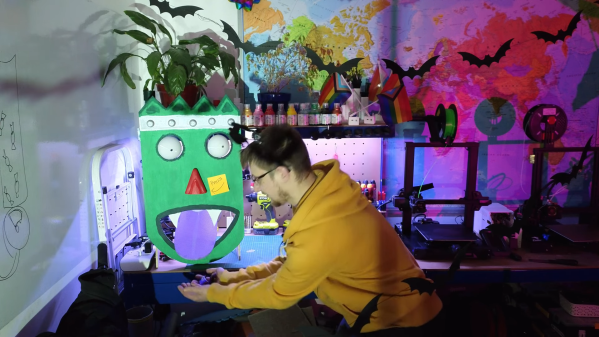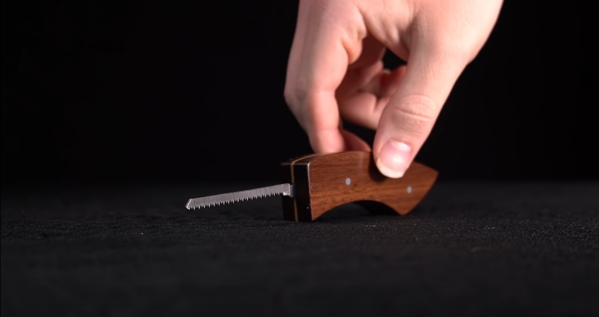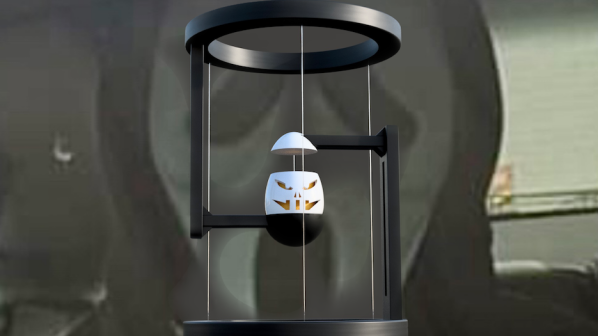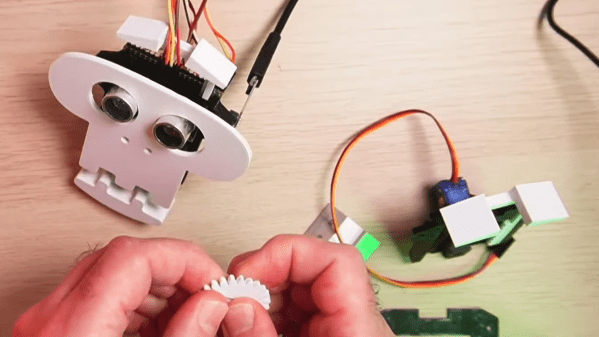Stationary pumpkins and motionless skeletons aren’t enough to scare people these days. If you want to really create a fright on Halloween, you need something more convincing. This bike-riding skeleton from [rc jedi] might just do the trick.
A few neat tricks make this impressive build surprisingly simple in nature. Propulsion is via a scrapped electric scooter drivetrain hidden in the sidecar. This not only propels the rig, but the third wheel means there’s no need to do any fancy balancing work to keep the bike upright. Steering is via a big chunky servo mounted to the bike frame which controls the handlebars. Regular RC gear handles remote control of the steering and drive.
The skeleton itself was an off-the-shelf buy, that was modified to have more flexibility in its joints. The hands were attached to the handlebars, and the feet attached to the pedals, so it appears to pedal the bicycle as it moves down the road. A dog skeleton rides along in the sidecar as a spooky companion.
A skeleton prowling the streets by BMX is a wonderfully spooky sight. We’ve seen some other great skeleton builds before, too, from the canine to the musical variety. Video after the break.
Continue reading “Bike-Riding Skeleton Stalks The Streets On Halloween”

















